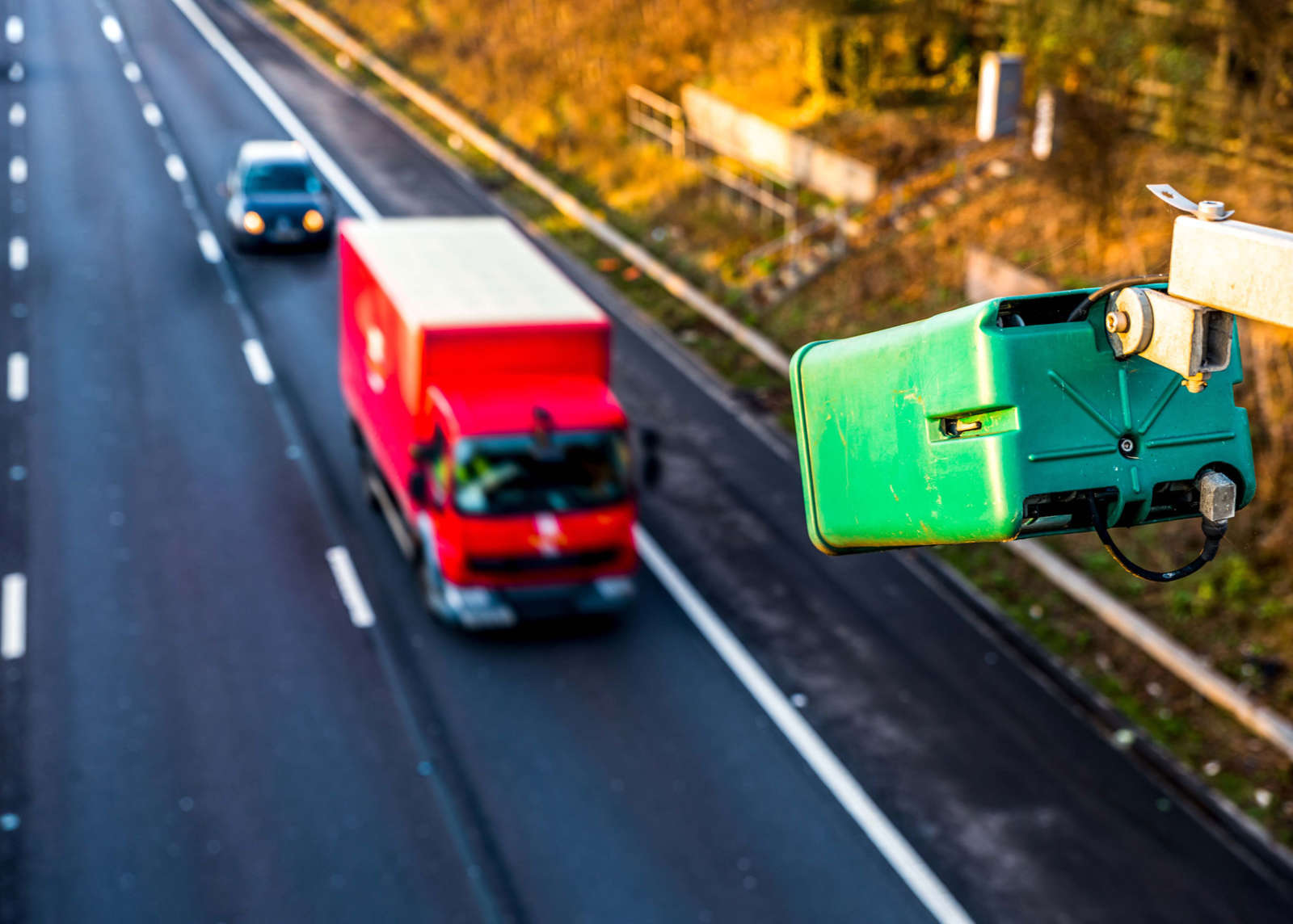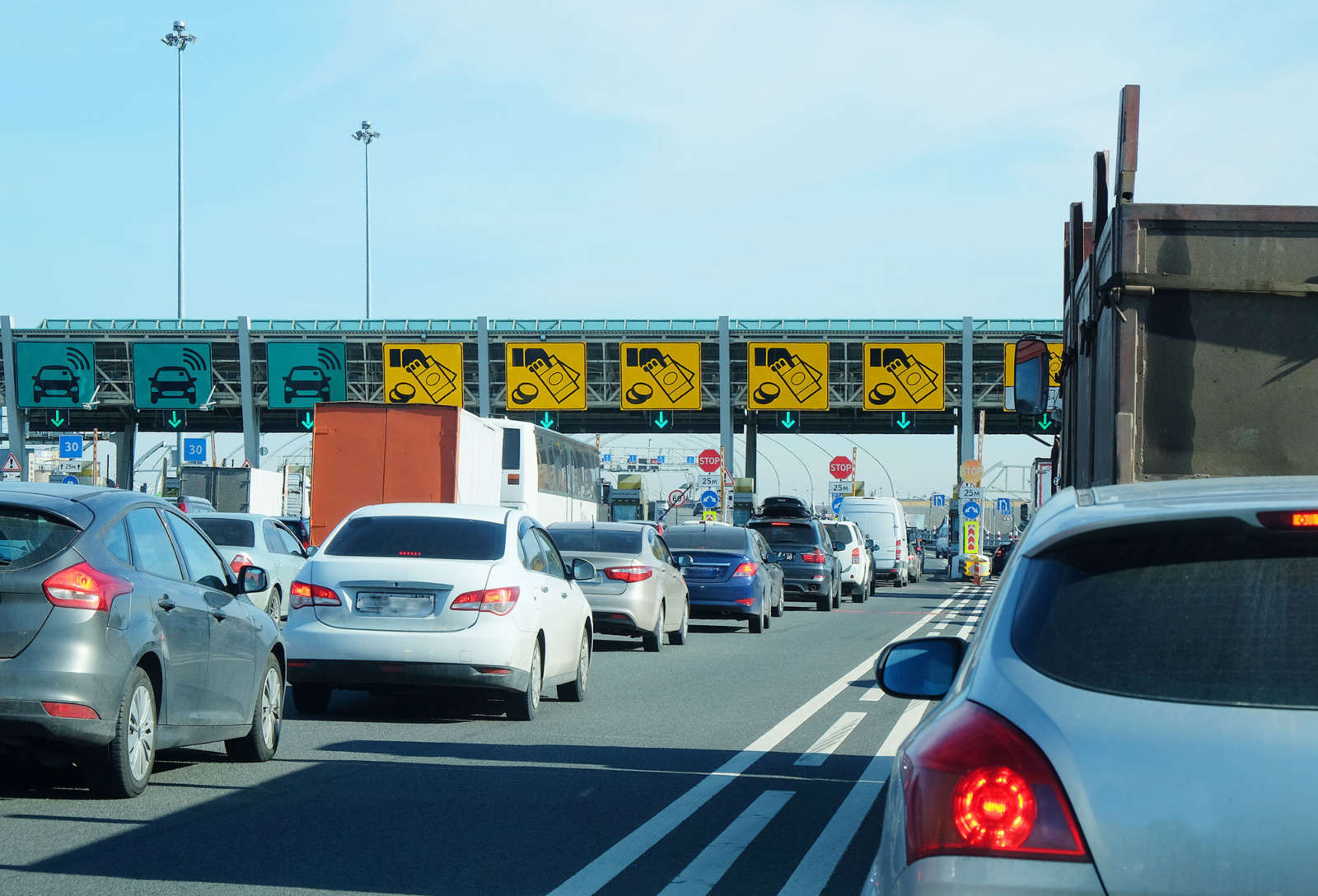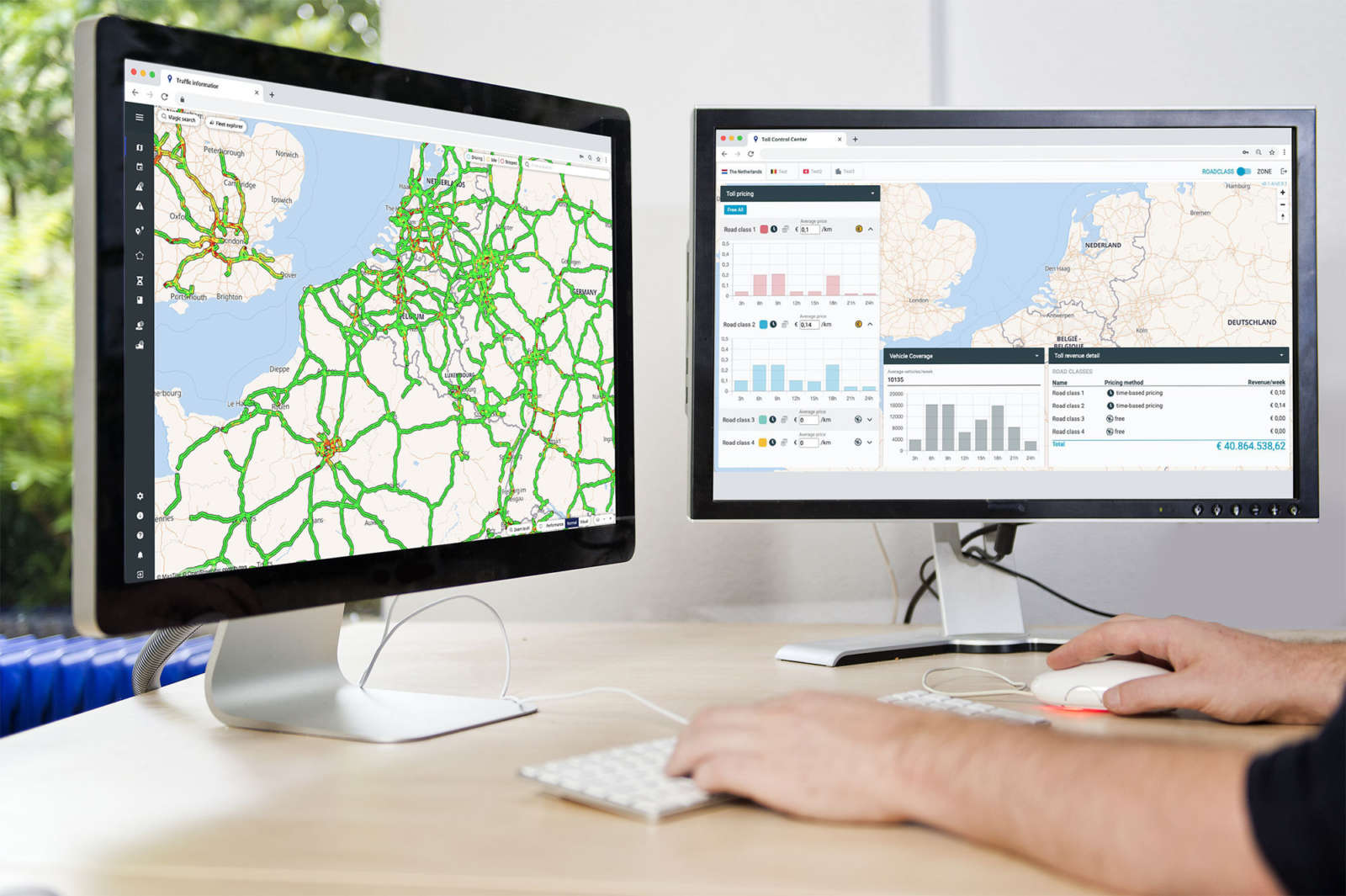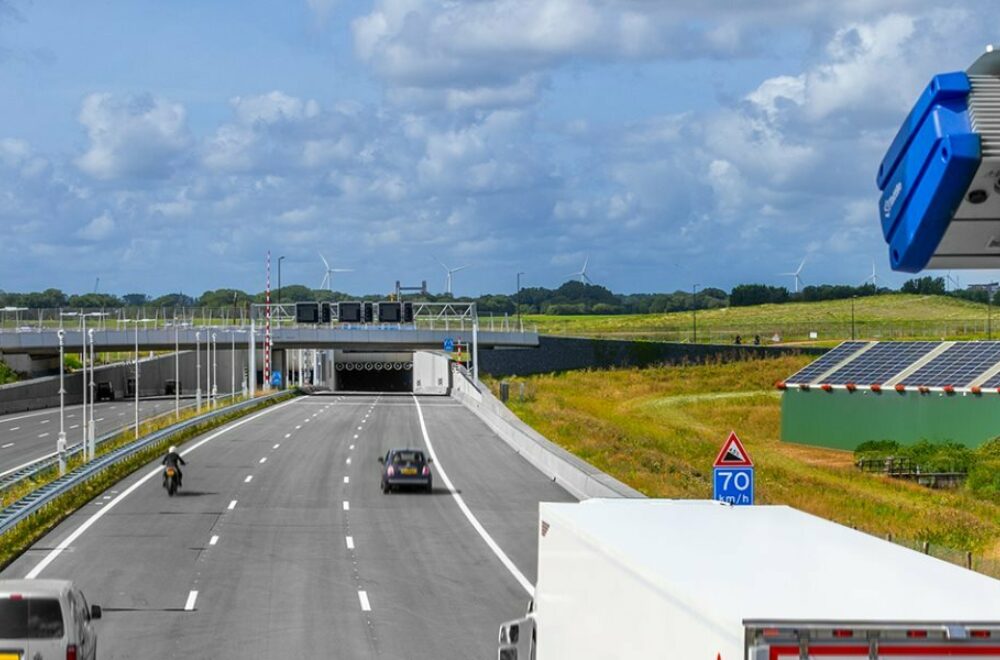
18 octobre 2021
Introduction
Many European countries have already created and instituted national truck tolling policies, and some of them are already using satellite-based technologies. The ability to precisely locate and track a vehicle in space and time is becoming increasingly essential for pricing road use. This technology enables regulation by distance, time and place and can be applied to nationwide road networks, covering all vehicle and road types. During the last few years, Global Navigation Satellite System (GNSS) technology has experienced tremendous growth and has become the key technology for distance-based electronic truck toll collection across Europe.
Until a couple of years ago, each country had a single national toll operator with a dedicated On-Board Unit (OBU) that worked exclusively to pay tolls on that country's road network, resulting in trucks with up to 5 OBUs attached to the windshield. The introduction of the European Electronic Toll Service (EETS) has provided a major breakthrough in the way tolls are collected in Europe. They allow commercial vehicles that are required to pay distance-based tolls to choose a single toll service provider, equip their vehicle with a single GNSS-based OBU, and drive across Europe without having to register in each country separately. The European directives greatly simplify cross-border commercial transport and have provided significant advances in the Intelligent Transport Systems (ITS) service sector.
Continue reading below the image.

The advancement of satellite-based technologies and reliable connectivity is largely driving this transition and making efficient toll collection and enforcement possible. Toll roads have relied heavily on expensive infrastructure that must be maintained and is also rapidly becoming obsolete. In addition, dedicated toll infrastructure also has its drawbacks. It is not only expensive, but also hugely inflexible as not all roads are equipped with toll booths or card readers. From this perspective, technological solutions that rely less on expensive road infrastructure are attracting more attention from the transportation industry. As the market has already developed and continues to grow, new stakeholders are bringing synergies that will facilitate the adoption of new technical innovations and business models.
The GNSS debut in Belgium: “user-polluter pays”
Belgium applied GNSS-based tolling first introducing nationwide distance-based charging for vehicles over 3.5 tons with the Viapass toll system in 2016. Since then, many countries are making moves to switch to a toll system that measures exact distances and not just the entry into a zone or section of road, in order to better price environmental and congestion impacts.
Either way, the combination of the EETS guidelines with the GNSS technology ensures that more stakeholders are involved in the tolling value chain. The national tolling authority receives the final charge amount from the Toll Service Provider (TSP). The TSP, in turn, will purchase software from a possible third party such as Be-Mobile to position the trucks exactly on the road network in time and place based on the data from their OBU and thus calculate that toll amount. That synergy between hardware and software contains some key elements:
- OBUs that enable secure communications and give toll enforcement agencies access to toll transaction data.
- Software solutions that reliably and efficiently collect and store the trip data of tollable vehicles in a given area, thus providing the basis for calculating tolls.
- Services that will map-match trip data on a map to calculate the exact distance of each trip on the toll road network and multiply it by the requirements specified by the toll charger.
- Front-end development organizations that can combine all of the above into a visual platform which allows overview and management of the information.
- Payment service providers specialized in handling the registration, distribution of OBUs and automatic payment of tolls in all toll areas.
How Be-Mobile is positioning itself in the tolling world
Be-Mobile was founded in 2006 by Jan Cools focusing on monitoring traffic congestion using connected vehicles. Today Be-Mobile operates its connected vehicle platform to offer solutions for electronic toll collection, smart city traffic management, fleet management, traveler information services and mobile payment for parking and public transport.
When the European EETS legislation was becoming a reality, Vinci partnered with Be-Mobile to become EETS in Belgium with their subsidiary Axxès. The granularity of their map matching activities made Be-Mobile an excellent partner, on top of their expertise in pricing logic and geo intelligence. Be-Mobile developed a unique high-performance toll collection platform in record time and Axxès successfully passed the tests to comply to the requirements in Belgium. The platform was certified and implemented for Viapass and they collected nearly 650 million euros in the first year of operation alone. The Belgian public authorities therefore had one of the most modern toll systems in Europe. The platform was subsequently rolled out for Germany, and Poland and Bulgaria will follow.
More and more countries want to make the switch to GPS-based tolling, and that is not the only development to be seen.
Future developments
We see that the world of tolling and road user management is changing and among other things we see an evolution from truck tolling only to intelligent kilometer charging for all vehicles to reduce, for example, the general traffic load. For the same reason, national tolling schemes are being combined with city tolling, which would also improve air quality and noise in a city. There is a growing interest from smaller toll chargers such as regions and cities.
Continue reading below the image.

We also see evolutions around hardware. In time, the route will no longer be determined by the OBU. More and more countries are considering replacing the expensive OBUs by smartphone tolling apps. Current OBUs for Heavy Goods Vehicles (HGV) have three functions:
- They provide a mobile connection between the truck and the backend platform for transmission of GPS data.
- They collect GPS points to reconstruct the route a vehicle has traveled.
- They include a DSRC module to enable enforcement equipment to see if tolls are being paid for the vehicle.
Providing the mobile connection and collecting GPS points can be fulfilled by a smartphone. In recent tenders for HGV GNSS tolling (Bulgaria and Lithuania), DSRC is also no longer used and replaced by ANPR enforcement. Assuming that light vehicle tolling will not use DSRC, smartphone tolling has all the assets to replace expensive OBUs.
A next trend is to move the (decentralized) map matching from the EETS parties to a centralized map matching platform at the toll chargers. The non-existence of a uniform way for map matching is one of the problems that such a system solves. Also, the fact that there are no standards for formatting and sending toll contexts or at all for GNSS tolling in general, can be solved by a central system. The number of toll stakeholders and players in the market continues to grow and the creation of general standards is inevitable.
A unified suite of services
In order to stay ahead of these evolutions, Be-Mobile has developed a unified suite of services, a Toll Control Center as it were. A central platform in which all useful tolling tools for both toll chargers and EETS are brought together:
- Toll collection with map matching, geocoding, geographic and time-based smart trip aggregation, tariff implementation, trip and inconsistency analyses, etc.
- The possibility to design a more complex “toll context” with road pricing based on direction, time, eco class, weight and the number of wheel axles, with additionally the automatic publication of the toll context according to the ISO 12855 standards.
- Measuring the impact on traffic density, environment and routes used based on historical traffic data when changes are made to the toll context.
- Predicting the impact on toll revenue when the toll context is changed.
- Exchanging the toll context with EETS partners in a standardized manner.
Gap detection and trip analysis with cross-checking for mobile and ANPR validation complement the enforcement work of the toll charger and detect fraud.
Continue reading below the image.

Conclusion
The tolling world is changing dramatically with the risk for toll chargers and EETS providers to fall behind. It is time to adopt industry standards and create uniformity. Be-Mobile’s Toll Control Center offers a suite of services to toll chargers and EETS providers that allow them to use all benefits of GNSS tolling.




